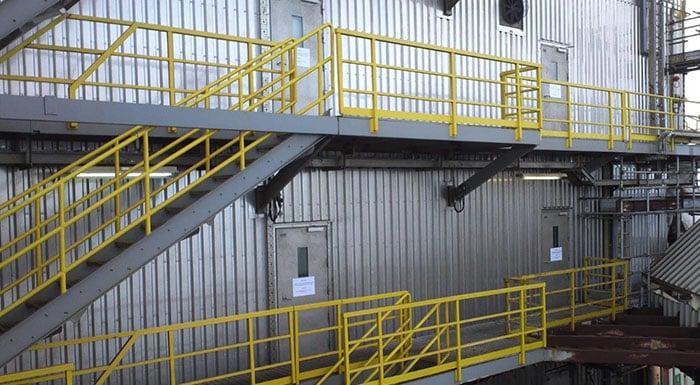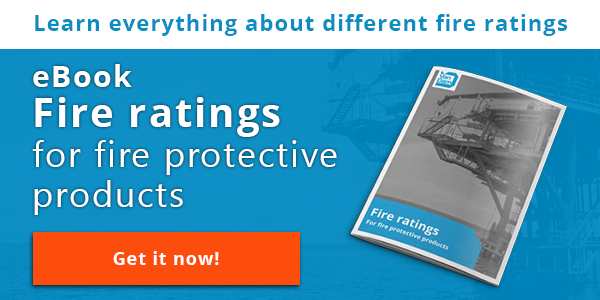
Fire and blast rated doors are given a fire rating according to their function to withstand the heat generated by fire. In order to achieve this, a great number of requirements for each part of the construction are developed. Read the three most important requirements for doors below.
Frames
All door frames have to be constructed of steel or equivalent materials and insulated in compliance with the desired standard of insulation. The material used for frames need to have sufficient thickness in order be robust and rattle free, suitable for the location and intended use. Door edges and door frames shall be reinforced to provide protection against damage from handling of goods.
During a general fire test for doors, special attention needs to be paid to the possible deformation of door frames. The maximum displacement of each corner of the door leaf relative to the door frame is important to record but it is not an FTP code failure criteria.
Windows
The application of windows on a fire and blast rated doors is an optional feature. The fire rating of a window is required to be of the same fire rating of the door. Depending on the fire rating, the glass of the window is of a certain thickness. Glass for “A” rated windows have to have a thickness of 43 mm, whereas “H” rated windows have to have a thickness of 140 mm.
Windows that are installed in e.g. “A” class doors are considered to be part of the door, thus have to be tested within the appropriate door. According to IMO FTP 2010, the approach adopted for testing windows shall generally follow the requirements for testing “A” class doors where relevant and appropriate.
Hinges
All door hardware generally have to be of stainless steel, unless specified otherwise. Visible surfaces have to have a brushed finish or a glass grit blasted finish because of visual matters. On blank stainless steel, you often see tracks of finger prints and with a brushed or glass grit blasted finish this issue is solved.
Fire and blast rated doors have to be provided with at least three hinges. Doors of a greater size would require at least four hinges.
“H”, “J” and “A” rated doors need to have hinges constructed of a material having a minimum melting point of 950oC (1742oF) unless it can be shown by the fire test that material having melting point below 950oC do not affect the performance of the door negatively.
The hinges of “B” and “F” rated doors must be constructed of a material with a minimum melting point of 850oC (1562 oF). If there are any materials used with a melting point lower than 850oC, a fire test must prove that the performance of the door is not affected negatively.
Want to know more about fire rated doors? Download our eBook fire ratings for fire protective products now!







